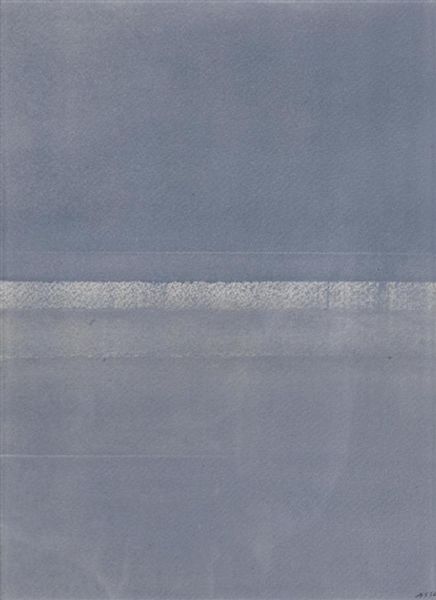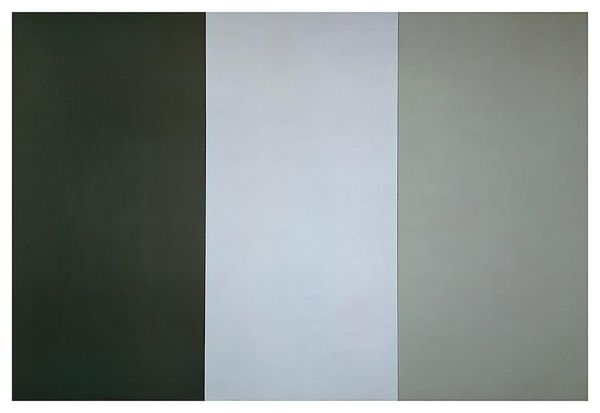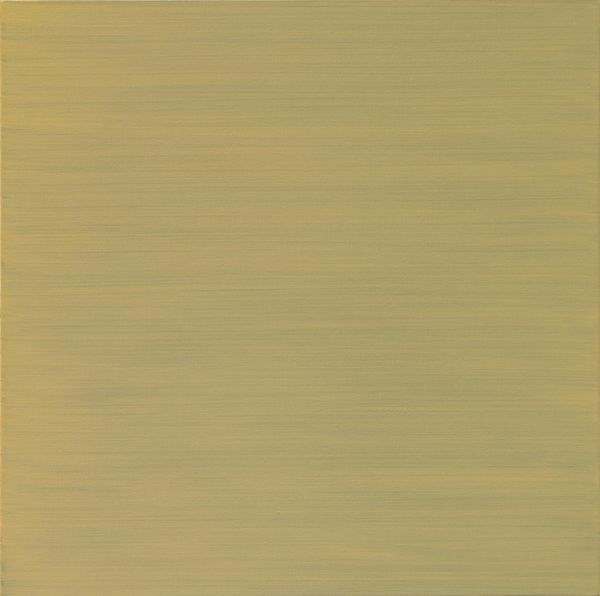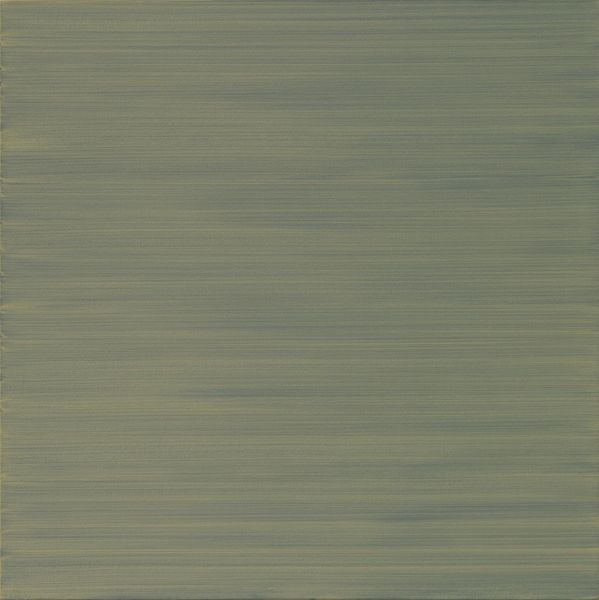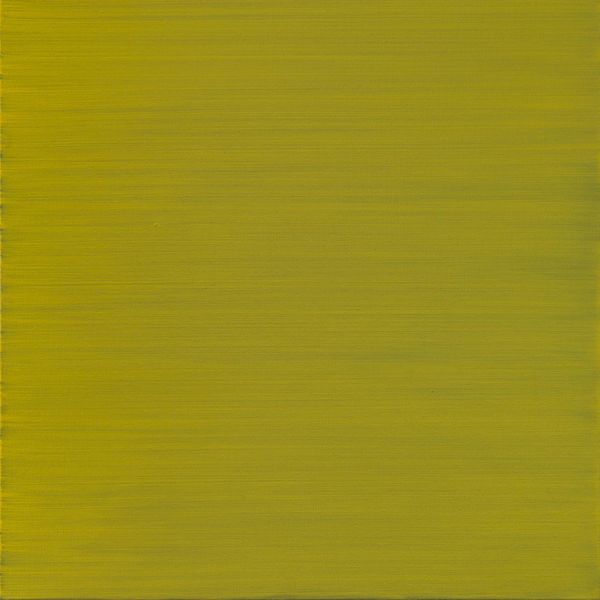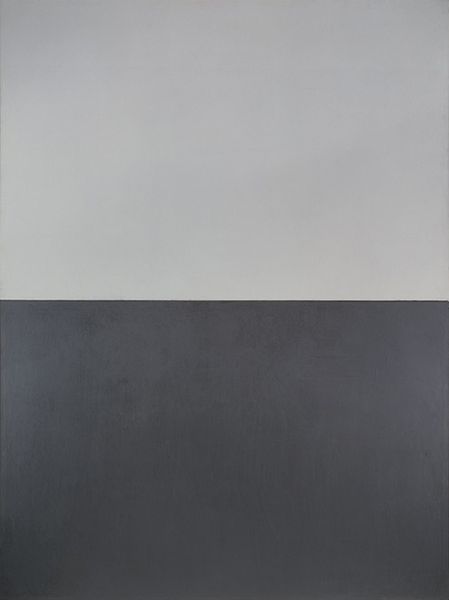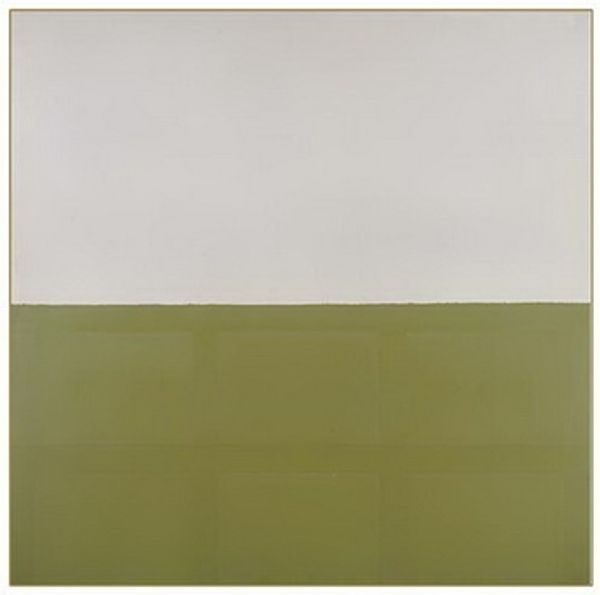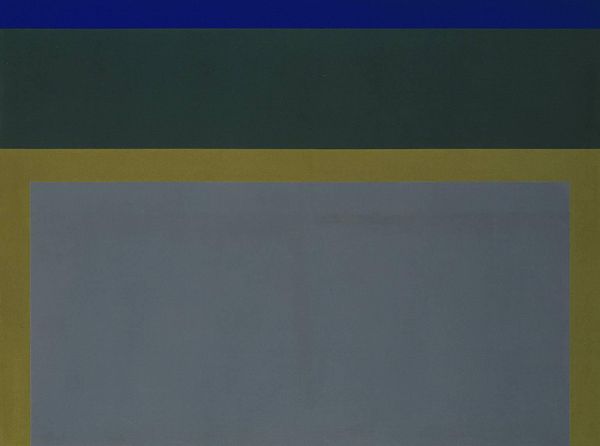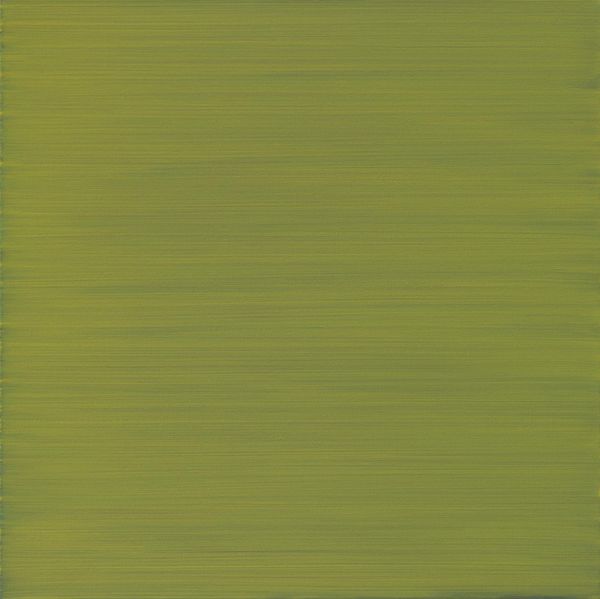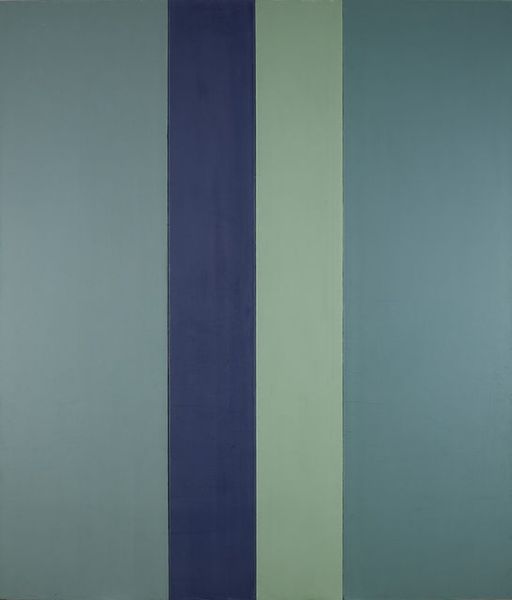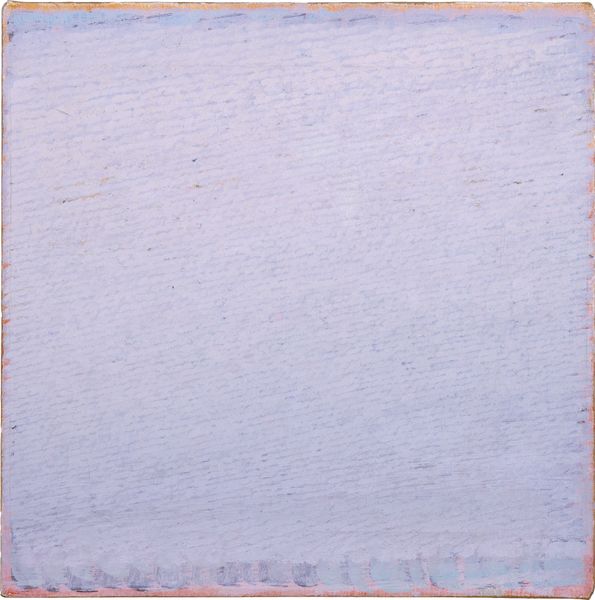
Copyright: Joan Hernandez Pijuan,Fair Use
Editor: This is "Folquer," an acrylic on canvas by Joan Hernandez Pijuan, created in 1972. It's deceptively simple – just a horizontal line dividing two fields of subtly shifting monochrome. What strikes me is the almost industrial flatness of it, and it makes me wonder...what’s your perspective on this? Curator: We must consider the material production of the monochrome. Look at the nuances in the acrylic application itself. It isn’t perfectly flat, is it? There are subtle variations that speak to the artist’s hand, despite the apparent industrial quality. This was 1972; what was the conversation surrounding painting and labor at that time? Editor: So you're saying it's not just about the finished product, but the process and how it fits into the broader social discourse of labor? Curator: Exactly. The perceived flatness might be a commentary on mass production, or even a rejection of traditional artistic virtuosity. Think about what materials are chosen and the social impact the materials themselves have. Where do they source their materials from, and the impact this has in society? How does this interact with abstract painting generally? Editor: It challenges the typical boundaries we put between art and manufacturing, highlighting the choices and labor embedded in its creation. Curator: Precisely. That simple line becomes loaded with meaning when viewed through that lens, no? Even monochrome is manufactured. It reveals a network of production. Editor: I hadn’t thought about it that way, I’m now seeing it as a dialogue about material and its journey in art. Curator: Exactly. What appeared minimal and simple becomes an opening into complex systems. Editor: Well, that's definitely changed how I view monochrome art; it's more about production than pure aesthetic now.
Comments
No comments
Be the first to comment and join the conversation on the ultimate creative platform.
